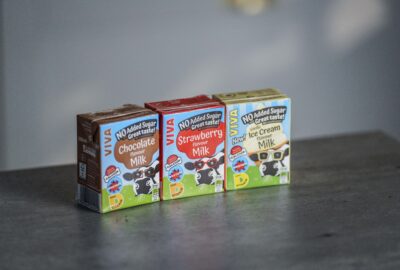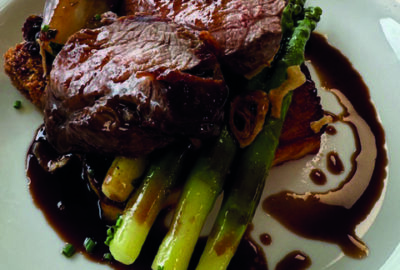Predominantly driven by independent restaurants, offal has been growing in popularity as nose-to-tail cuisine, sustainability factors and rising costs become the norm. Often identified as the brains, tongue or heart of an animal, offal has been sidelined over the years in favour of more commercial cuts of meat, however, ask anyone over a certain age and they would regale you with stories of dinners featuring kidneys, liver, sweetbreads, oxtail and faggots.
According to the National Food Survey, in 1974, the average person ate 50g of offal a week – fast forward to 2014 and this dropped to just 5g per week. The result? A lot of wasted food from valuable livestock. Fortunately, chefs are now reconsidering ingredients they had once previously discarded and as a result, it is once again taking centre stage.
Offal is well-known for being a rich source of protein which is ideal for care home residents, delivering much needed sources of iron and vitamin A. But offal is not just for the aging population, doctors have long hailed its nutritious properties, supporting gastro-intestinal and immune health, yet it seems as though consumers have forgotten what’s best for them. As the battle between chef and patron wages, we dive deeper into how operators can make offal more appealing.
A CONTEMPORARY TWIST
As the creative juices of talented chefs around the country start flowing, we are now witnessing new dishes emerging. “Adding chopped chicken livers to a beef ragu is a simple way to really elevate it. Combine chopped chicken livers, mint and olive oil, then add them to the Bolognese once your pasta is cooked. Serve and top with grated parmesan,” comments Dean Parker, Chef at Celantano’s. This is a great way to get offal on the menu in schools – serving it in a dish that is well known and loved. Dean also recommends adding chicken liver mousse to beef pappardelle for a more creamy consistency.
Elsewhere in the hospitality sector, chefs at St John, Kiln and Smoking Goat have made names for themselves by serving sublime dishes featuring offal, and the team at Smoke Stak have taken things to the next level. Here, consumers can find almost every edible part of an animal on their menu including crispy ox cheek nuggets and pigtails drenched in treacly soy molasses.
COOKING TECHNIQUES & PAIRING FLAVOURS
Cooking with offal is not as difficult as it may seem, however it’s important to note that the cooking and handling techniques of each part varies, which is probably what gives it a reputation for complexity. For example, pork liver should be cooked quickly at a high heat, whereas beef liver is best braised or stewed. “I’d suggest starting with chicken livers. Out of all the offal, it has the least intense flavour, and is the hardest to get wrong! In general, don’t overcook offal – it’ll taste bitter, and the texture becomes grainy and unpleasant.” advises Dean at Celentano’s.
Luke Richardson, Executive Chef at Climat recommends roasting bone marrow as a starting point as it is simple and easy to buy. “Other more niche ingredients such as deep-fried brains (lamb or calves) are easy to cook and if you get it wrong won’t put you off offal for life. Alternatively, during the summer there will be a glut of lambs’ tongues, they are delicious braised then served with goats curd, fresh peas & mint” he says.
Pairing flavours can also be overwhelming when starting out. “Mint, surprisingly, pairs perfectly with offal. They use a lot of mint in Sicily, which is where we first tried the flavour pairing. Allspice and bay with black pepper also works well, and red wine (but that’s a given!)” says Dean. Chilli, paprika, turmeric, cumin and garlic also work well but for something a little more unusual, try espresso with red meat. Looking further afield, try Adobo, a Spanish seasoning, or Achiote which is native to the Caribbean and Mexico.
KEEP IT SIMPLE
If ox tongue with capers is a step too far for your menu, try something a little more simple such as a bone marrow broth, (which has been hailed by the health conscious consumer press recently). Pork cheeks glazed with ginger and soy served in a crispy ciabatta roll, or adding the much-loved dish of liver and bacon back onto your menu will also be a great mainstream starting point. You also can’t go far wrong with a steak and kidney hot pot or pudding!
To minimise food waste in your kitchen, roast potatoes in pork fat or fry chicken in beef tallow which (unlike a lot of vegetable oils) is a heat-stable fat. Roasting chicken bones for stock with a great depth of flavour will also save you money.
Despite its slightly unfortunate umbrella term, offal is good for the wallet and for the gut. Including it on your menu adds another dimension to your sustainability credentials too, so why not give it a go this autumn?


